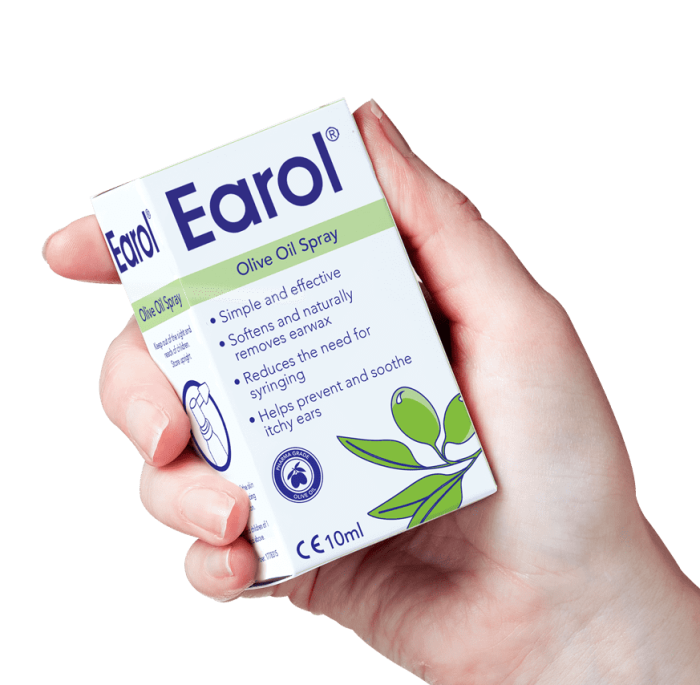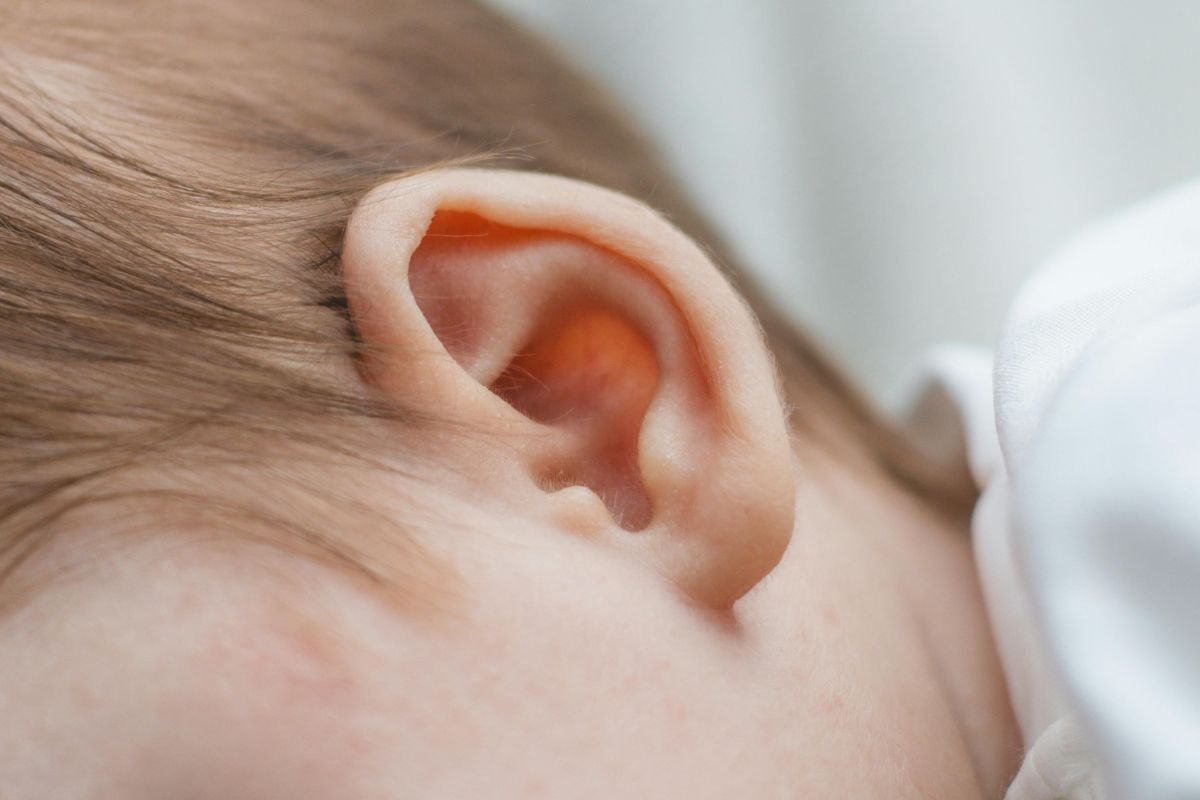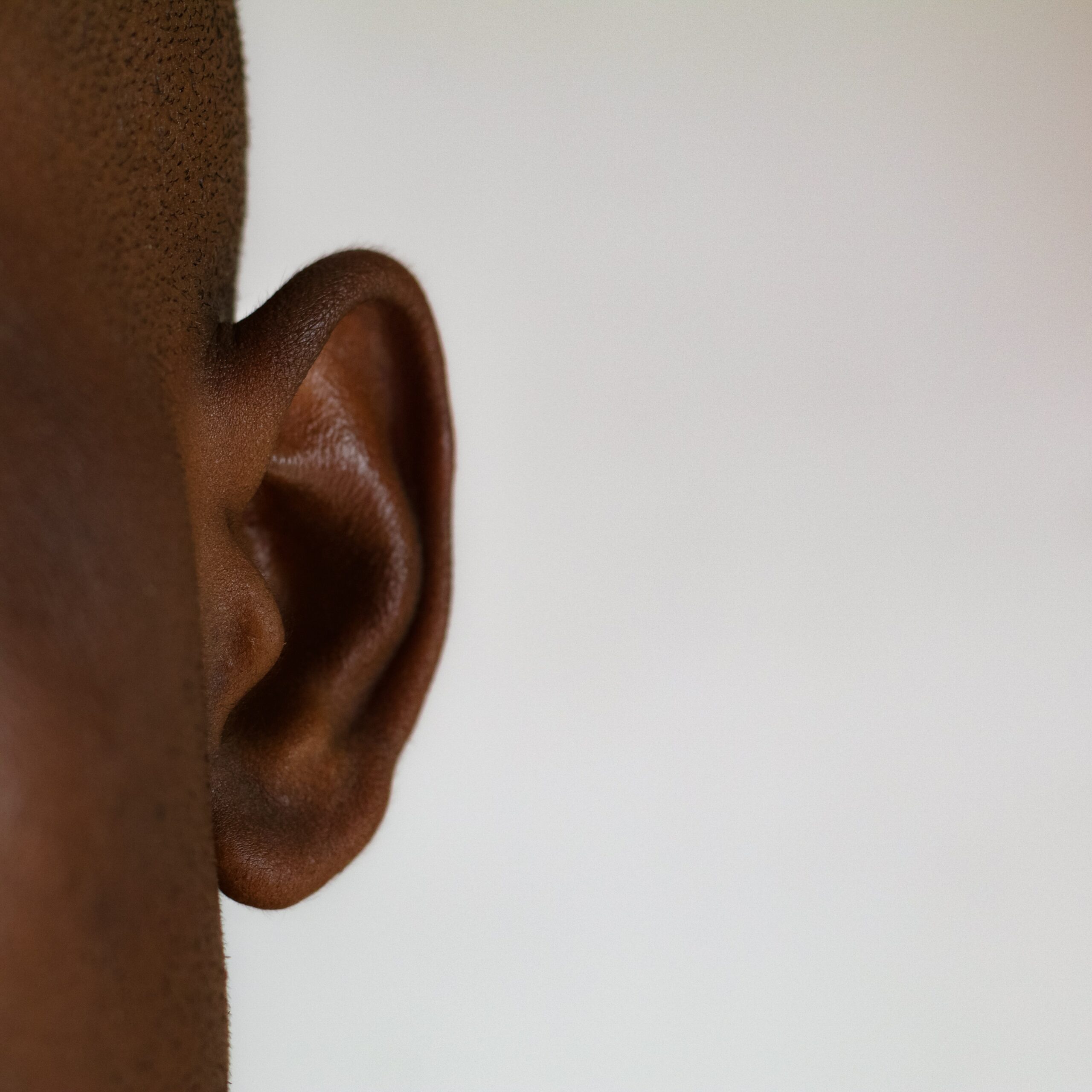How Often Should You Clean Your Ears?
Knowing how to properly clean your ears is vital. Your ears are one of your most delicate body parts, and not practicing basic hygiene with your ears can lead to damage and hearing loss1. But what is the correct way to clean your ears? Some people use cotton swabs, while others use ear candles, and some do not clean their ears at all1. Although it is not recommended to clean our ears all the time, sometimes wax build up requires intervention or prevention9.
How To Get Rid of Blocked Ears
It can be uncomfortable and a little jarring to feel like our ears are stuffed up, especially when it prevents us from hearing clearly – it’s not always easy to identify why. A common reason is impacted earwax, a sticky build-up of the otherwise normal secretions that keep the ear canal lubricated2. While you may be tempted to try removing it with a cotton swab, this tactic can backfire, pushing wax further inside ear2. We recommend using Earol, an effective and gentle earwax softening spray. You can find more information on how to clear an earwax blockage using Earol here.
Pay Attention to Your Own Ear Health
Your ear health is a critical aspect of your overall well-being, and paying attention to it is essential. Regularly monitoring your ears for any signs of discomfort, hearing loss, or blockages and attending regular hearing tests are an essential part of maintaining good ear health and preventing any potential issues from progressing3. By scheduling regular hearing tests, you can stay informed about the condition of your ears and take necessary steps to address any problems3.
One of the primary benefits of regular hearing tests is that they can detect any changes or deterioration in your hearing ability. As we age, our hearing naturally declines, but other factors such as exposure to loud noises, medical conditions, or certain medications can also contribute to hearing loss3. By undergoing hearing tests at regular intervals, you can identify any changes early on and take appropriate action3.
If you wear hearing aids, these tests can also help determine if your current hearing aids are effectively meeting your needs. Over time, your hearing may change, and the settings on your hearing aids may need to be adjusted3. By regularly monitoring your hearing, audiologists can make necessary modifications to optimise the performance of your hearing aids, ensuring that you are hearing as clearly as possible3. In some cases, a hearing test may reveal that you need to be fitted for new hearing aids. Technology in the field of hearing aids is continually advancing, and newer models often offer improved features and capabilities3. By staying up to date with your hearing tests, you can explore options for upgrading to more advanced hearing aids that better suit your specific requirements3.
Hearing tests can also help identify any underlying conditions that may be affecting your hearing. Certain medical conditions, such as ear infections, tumours, or damage to the inner ear, can lead to hearing loss3. By regularly monitoring your hearing health, you can catch any potential issues early on and seek appropriate medical treatment3. Hearing tests may also highlight wax build up, which can be removed, and potentially improve hearing3.

Regular Ear Hygiene Routine
It’s important to understand that earwax plays a vital role in protecting our ears. It helps trap dirt, dust, and other foreign particles, preventing them from reaching the delicate structures of the ear canal3. As a natural self-cleaning process, the earwax slowly moves from the inner ear to the outer ear, where it eventually dries up and falls out. Therefore, it is unnecessary to clean your ears excessively or try to remove earwax on your own3.
Although earwax usually passes out of the ears harmlessly, sometimes too much earwax can build up and block the ears. A build-up of earwax is a common problem that can often be treated using Earol Olive Oil spray. If this doesn’t work, contact your GP practice9.
To maintain healthy ears, it is recommended to gently clean the outer ear with a soft cloth during regular bathing or showering4. You can also use Earol once a week as a preventative measure 4.
Avoid Daily Cotton Swab Use
Inserting cotton buds or cotton swabs into the ear canal to clean your ears can do more harm than good3. Instead of removing earwax, the buds can inadvertently push the ear wax further into the ear canal, leading to a blockage or impaction3. This blockage can cause various symptoms such as earache, hearing loss, tinnitus (ringing in the ears), or even dizziness3. Using a cotton bud can damage delicate ear canals and potentially perforate the eardrum, resulting in severe complications and potential hearing loss3.
It’s not just by pushing wax down into the ear that cotton buds can cause harm. Scraping the cotton bud along the sensitive surface inside of your ear can cause bleeding, which is difficult to deal with in the ear, as well as internal bruising5. While cotton buds might look like the ideal ear tool, they are far from it 5.
Use Earwax Softeners Occasionally
Earol is a gentle and effective earwax softening spray that can help soften and break down earwax, making it easier to remove naturally or with professional assistance. Using earwax softeners like Earol as needed can prevent excessive earwax buildup without the need for frequent manual cleaning. The recommended dosage of Earol is 2 sprays per affected ear, twice a day for 4-5 days prior to wax removal. Earol provides a spray coating of the olive oil-based formulation over the wax. It is easier to administer than olive oil drops6.
If your baby is suffering with a build-up of earwax, Baby Earol offers a gentle, natural blend of pharmaceutical-grade olive oil and mineral oil, clinically proven to soften and break up ear wax for clinical removal procedures. Baby Earol also soothes itchy and irritated ears, helping keep your little one comfortable. Used weekly Baby Earol moistens new ear wax, preventing buildup, itching and irritation. Delivered via a metered dose spray, Baby Earol can be used for up to 36 months after first use. Baby Earol is the only earwax treatment suitable for children as young as 6 months old14.

Seasonal Considerations (When Allergies or Respiratory Infections Are Common)
Spring is the first sign of better weather, but sadly also brings with its allergies and its symptoms, such as sneezing, itchy eyes, nasal congestion and even ear infections or hearing loss7. When the good weather begins, plants begin to flower, however, pollination can cause many people to experience uncomfortable symptoms7. The respiratory tract is most affected by spring allergies, which can lead to an imbalance of the pressure in our ears and can cause a reduction in hearing, or even infections or damage to the ear7.
To help prevent this problem, try, and avoid going outside at dawn and dusk, when the pollen count is highest, and avoid sudden changes in temperature (overuse of air conditioning etc)7. If you use a hearing aid, avoid moisture, humidity, and exposure to high temperatures, as pollen can block and damage them in these conditions7.
And in the colder months, those earmuffs could be doing more than simply protecting the outer ear from cold temperatures. While age related hearing loss and noise induced hearing loss are the most common reasons that hearing is lost, other factors or conditions can also have an effect7. When winter sets in, be sure to take the necessary precautions to protect your ears — inside and out7, here are some common effects that cold weather can have on your ears7:
Hardening ear wax: Exposing the ears to freezing conditions can result in the hardening of ear wax, resulting in blockage or impaired hearing7.
Increased risk of ear infections: Cold weather increases the risk of ear infections because it limits the circulation in the ear7.
Damp hearing aids: Those who wear hearing aids need to be aware of the risk of moisture damage during winter. While hearing aids should function in the same way they would in the other seasons, cold weather activities could result in more moisture than normal.7For example, walking long distances outdoors could transfer sweat onto your hearing aids7. Monitor your hearing aids regularly and ensure they are always kept clean and dry7.
Hearing Aid Users
While it’s important that our ears make the correct amount of earwax for our protection, too much of it can wreak havoc on hearing aids. It can lead to issues such as8:
- Hearing aid feedback8
- Sound being blocked from entering your ear8
- Cause your device to fit poorly or cause discomfort in your ear8
- Damage to the hearing aid and battery from moisture caused by the earwax, leading it to malfunction completely8
Symptoms And Signs That Indicate the Need for Earwax Removal
Earwax is a helpful and natural part of your body’s defences. It cleans, coats, and protects your ear canal by trapping dirt and slowing the growth of bacteria13. If your ears produce too much wax or if earwax isn’t cleared well enough, it may build up and block your ear canal13.
A build-up of earwax in your ear can cause9:
- Earache9
- Hearing Loss9
- Tinnitus9
- Itchiness In or Around the Ear9
- Vertigo9
- Ear Infections9
These problems will usually improve once the excess earwax has been removed9.

How To Remove Earwax at Home with Earol Olive Oil Spray
If you’re looking for a safe and effective way to remove earwax at home, using Earol Olive Oil Spray is a popular method. Olive oil is a natural and gentle solution that can help soften earwax, making it easier to remove10.
- Open the ear canal by gently lifting and pulling outwards on the upper ear11
- Spray Earol once or twice into the blocked ear11
- Massage the small bump on the outside of the ear, whilst moving the jaw up and down, and left to right. This helps Earol adhere fully to the ear canal walls11
- Apply Earol twice daily for 4-5 days before wax removal, or once a week after wax removal as a preventative measure11
It’s important to note that while olive oil is a safe and gentle method for earwax removal, it may not be suitable for everyone. If you have a perforated eardrum or a history of ear issues, consult with a healthcare professional before attempting at-home earwax removal.

In conclusion, maintaining healthy ears is vital for overall well-being, and it requires a combination of proper hygiene, protection, and professional care12. By using safe and effective products like Earol, monitoring your ear health, and being aware of the signs that indicate the need for earwax removal, you can keep your ears in excellent condition. Remember, when it comes to ear health, prevention is key.
References
1 Team, A. (2022) How to properly clean your ears & the importance of it, Allergy & ENT Associates. Available at: https://www.aentassociates.com/how-to-properly-clean-your-ears-the-importance-of-it/#:~:text=Earwax%20is%20normal%20in%20your,in%20one%20or%20both%20ears. (Accessed: 06 November 2023).
2 Toni Golen, M. and Hope Ricciotti, M. (2023) Why do my ears feel clogged?, Harvard Health. Available at: https://www.health.harvard.edu/diseases-and-conditions/why-do-my-ears-feel-clogged#:~:text=Clogged%20ears%20can%20also%20result,(including%20COVID%2D19) (Accessed: 06 November 2023).
3 How to care for your ears (2023) South East Hearing Care Centres. Available at: https://www.hearingcarecentres.co.uk/10-tips-care-ears-properly/ (Accessed: 06 November 2023).
4 Rated 5 out of 5 Eve (verified owner) – March 23 et al. (2023) Earol olive oil spray 10ml, Hearing Aid Accessories. Available at: https://www.hearingaidaccessories.co.uk/shop/cleaning-products/earol/#:~:text=Use%201%20or%202%20applications,week%20as%20a%20preventative%20measure. (Accessed: 06 November 2023).
5Stre…, A.T.H. (no date) Why you should stop using cotton buds to clean your ears, Why you should stop using cotton buds to clean your ears | Harley Street ENT Clinic. Available at: https://www.harleystreetent.com/blog/why-you-should-stop-using-cotton-buds-to-clean-your-ears#:~:text=Cotton%20buds%20can%20damage%20the%20inner%20ear&text=Scraping%20the%20cotton%20bud%20along,are%20actually%20far%20from%20it. (Accessed: 06 November 2023).
6 Ear Care and Treatment (no date) Wadebridge and Camel Estuary Practice. Available at: https://wadebridgedoctors.co.uk/practice-information/ear-care-and-treatment/#:~:text=The%20use%20of%20an%20olive,administer%20than%20olive%20oil%20drops. (Accessed: 06 November 2023).
7 How the weather affects your hearing (2023) Imperial Hearing. Available at: https://www.imperialhearing.com/news/how-the-weather-affects-your-hearing/#:~:text=Seasonal%20allergies&text=Allergy%20symptoms%20may%20include%20fullness,in%20the%20ears%20(tinnitus). (Accessed: 06 November 2023).
8 Fuel-Admin (2022) How to avoid earwax buildup with hearing aids, San Francisco Audiology. Available at: https://sfaudiology.com/how-to-avoid-earwax-buildup-with-hearing-aids/ (Accessed: 06 November 2023).
9 Earwax build-up (1BC) NHS inform. Available at: https://www.nhsinform.scot/illnesses-and-conditions/ears-nose-and-throat/earwax-build-up/ (Accessed: 06 November 2023).
10 Carrie Madormo, R. (2023) Using olive oil for earwax and Ear Infections, Verywell Health. Available at: https://www.verywellhealth.com/olive-oil-in-ear-5180872 (Accessed: 06 November 2023).
11 EAROL® Olive Oil Spray: Natural ear wax remover (2023) Earol®. Available at: https://earol.co.uk/earol-products/earol/ (Accessed: 06 November 2023).
12 Nicole (2023) Tips for maintaining healthy ears: Ear Health Tips, Moor Hearing. Available at: https://moorhearing.co.uk/a-closer-look-at-ear-health-tips-for-maintaining-healthy-ears/ (Accessed: 06 November 2023).
13 Earwax blockage (no date) Mayo Clinic. Available at: https://www.mayoclinic.org/diseases-conditions/earwax-blockage/symptoms-causes/syc-20353004 (Accessed: 09 November 2023).
14 Baby Earol® olive oil spray: Natural ear wax remover (2023) Earol®. Available at: https://earol.co.uk/earol-products/babyearol/ (Accessed: 09 November 2023).





